Madeleines are delicate, buttery French cakes that will melt in your mouth. Their slightly crisp edges are simply addictive! I love them scented with vanilla and a hint of lemon, but there are so many different variations you can try. Pair these little cakes with a cup of tea or coffee for a delightful snack.
My favorite way to serve these classic madeleines is with a light dusting of powdered sugar, but you can dip them in chocolate or even a powdered sugar glaze for more sweetness and an elevated presentation. For more French dessert recipes, try my French macarons, mille-feuille, and financiers.
What are Madeleines?
Madeleines hail from the Lorraine region of France. While often thought of as cookies because of their size, madeleines are actually small butter cakes, similar to sponge cakes. Madeleines are light and airy and known for their beautiful shell shape and signature hump.
Ingredients
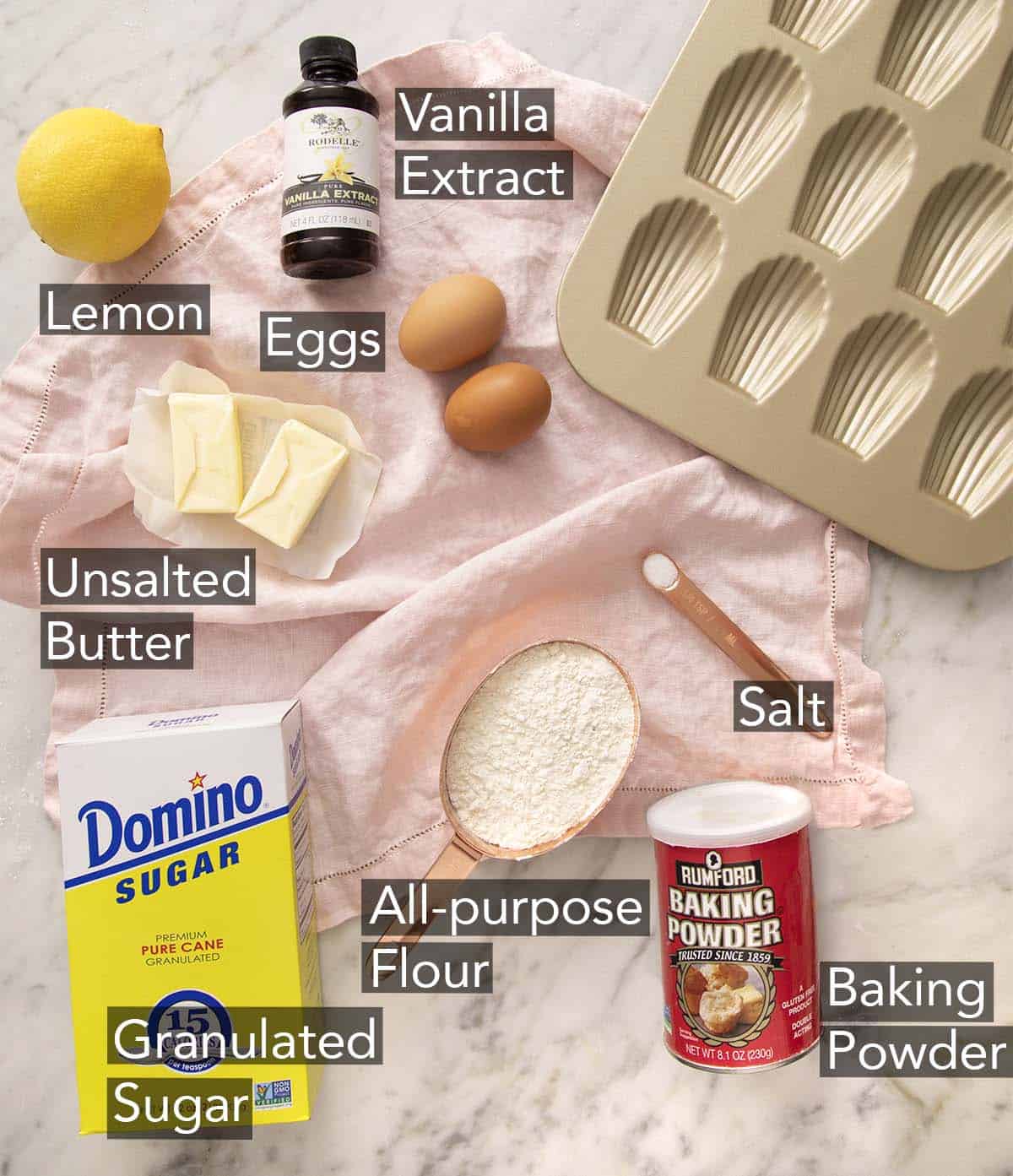
Butter — since you will be using cooled melted butter in this recipe, don’t worry about setting the unsalted butter out in advance.
Flour — you’ll sift the all-purpose flour to help aerate it for a lighter madeleine texture.
Baking powder — a little baking powder helps the madeleines rise.
Eggs — in this recipe, eggs are vital for giving madeleines lift.
Sugar — ½ cup of granulated sugar gives them just the right amount of sweetness.
Vanilla — use good vanilla extract for the best flavor.
Lemon — fresh lemon zest adds a hint of citrus flavor that pairs so well with the vanilla notes.
Powdered sugar — dust the baked madeleines with powdered sugar for extra sweetness and a beautiful presentation.
How To Make Madeleines
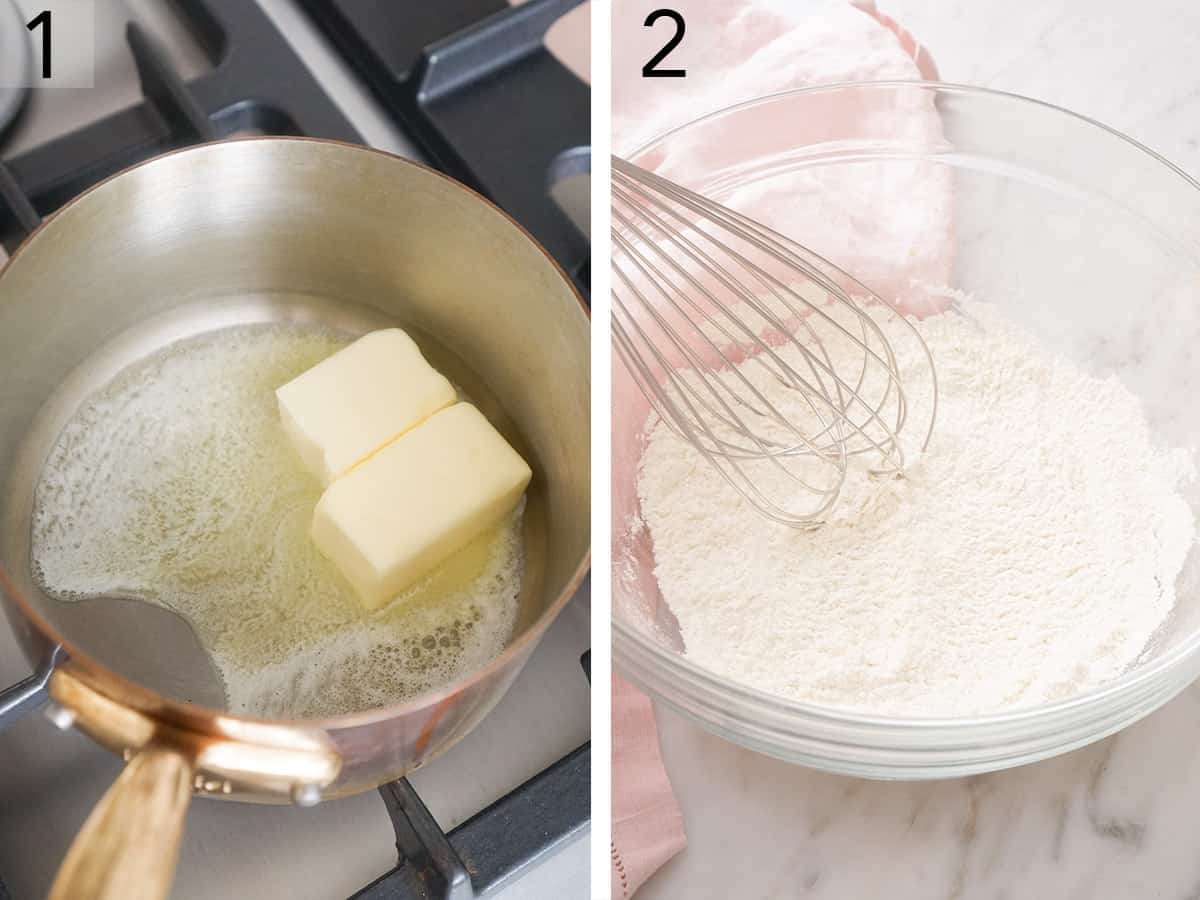
1. Melt the butter, then pour it into a bowl and allow it to cool to room temperature.
2. In a medium bowl, sift together the flour, baking powder, and salt. Then, whisk it together and set aside for now.
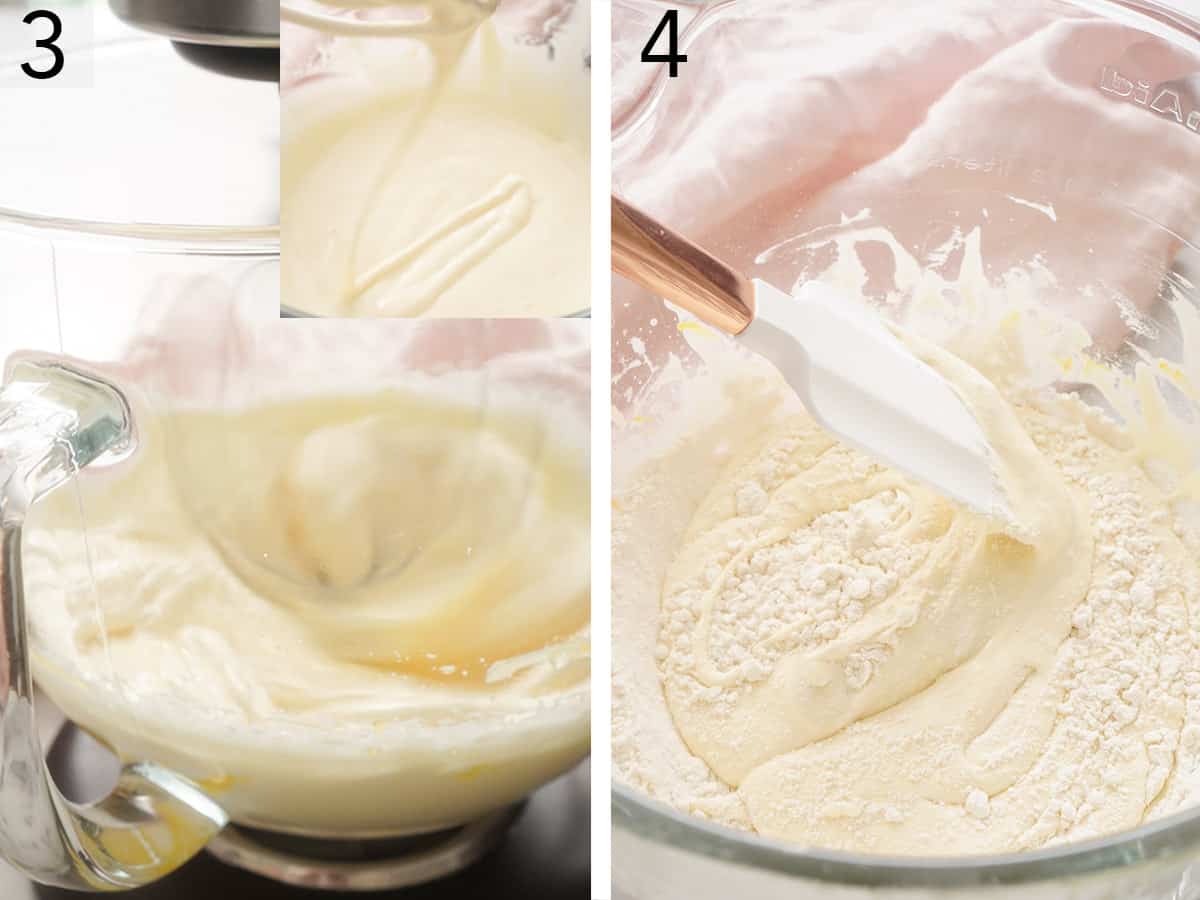
3. In the bowl of a stand mixer fitted with a whisk attachment, combine the eggs and white sugar. Beat on high speed until the mixture reaches the ribbon stage. Mix in the vanilla and lemon zest on low speed just until combined.
4. Gently fold the dry ingredients into the wet ingredients so as not to deflate the beaten eggs.
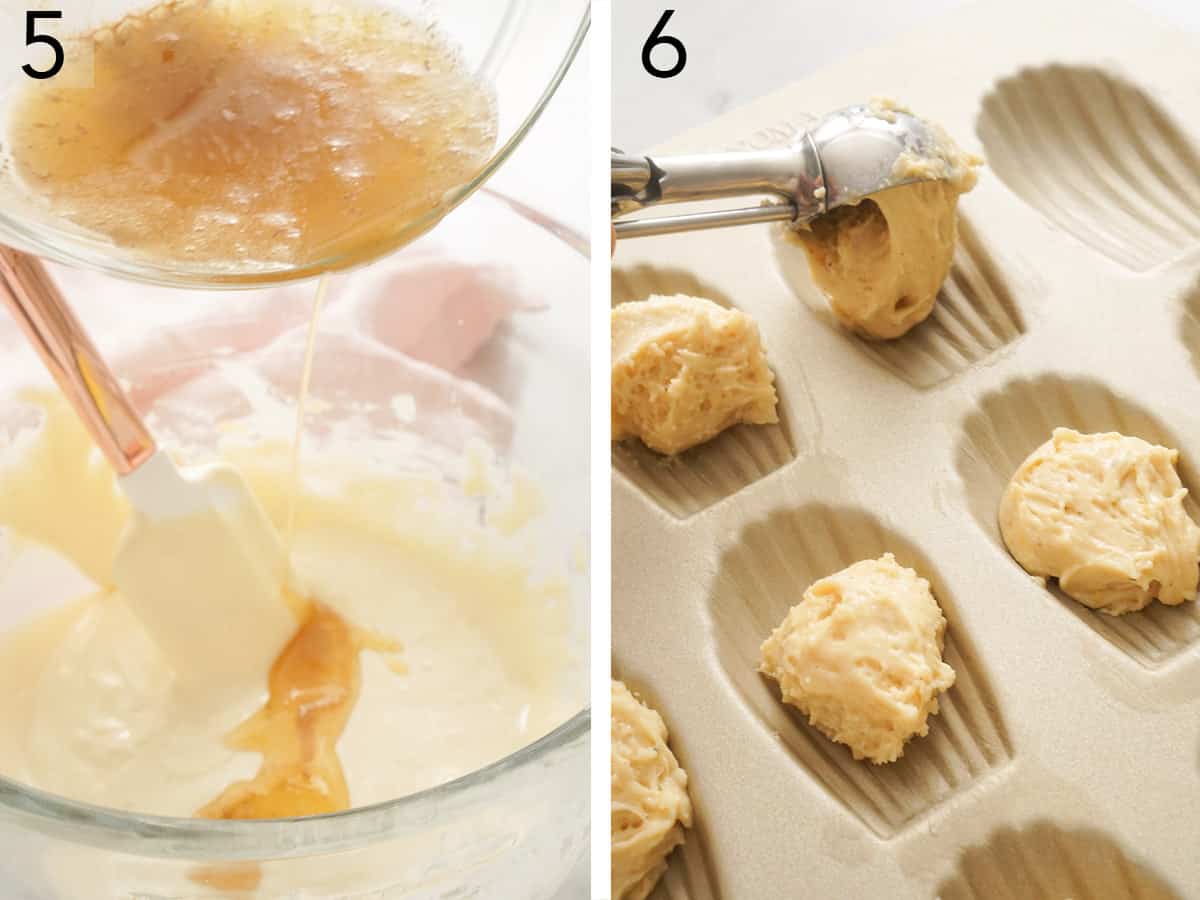
5. Drizzle the melted butter into the batter and gently mix until just combined. Cover and refrigerate the batter for 1 hour. Spray inside the cavities of the madeleine pans with nonstick baking spray. Then refrigerate the pans for about 1 hour while the batter is chilling.
6. After the batter has chilled for 40 minutes, preheat the oven to 350°F. After an hour has passed, scoop a generous tablespoon of cold batter into each of the scallop-shaped wells of the madeleine pan. Bake for 8 to 10 minutes until golden brown on top and the cakes spring back slightly when pressed with your finger. Let the madeleines cool in the pan for about 3 minutes, then turn them out of the pan to cool completely (not on the scalloped side). Serve with a light dusting of powdered sugar.
Properly Preparing The Pan
A madeleine pan is an essential element to successful madeleines with a signature shell shape! Traditionally, the pans are brushed with softened or melted butter to help prevent the cakes from sticking.
I used to do this but have since found that baking spray with flour included actually bakes a more perfect outer crust! Plus, it’s super easy and takes less time than using butter. But feel free to brush the insides of the cavities with melted butter using a pastry brush if you’d like to do the more classic technique!
Does the Color of the Pan Matter?
Madeleine pans are usually made of metal, but I have seen silicone ones as well. I prefer a metal non-stick pan when baking madeleines so they produce a nice, golden crust. Keep in mind that a darker pan will bake a darker golden crust. However, any metal madeleine pan should work well for this recipe as long as you grease it properly to prevent the small cakes from sticking.
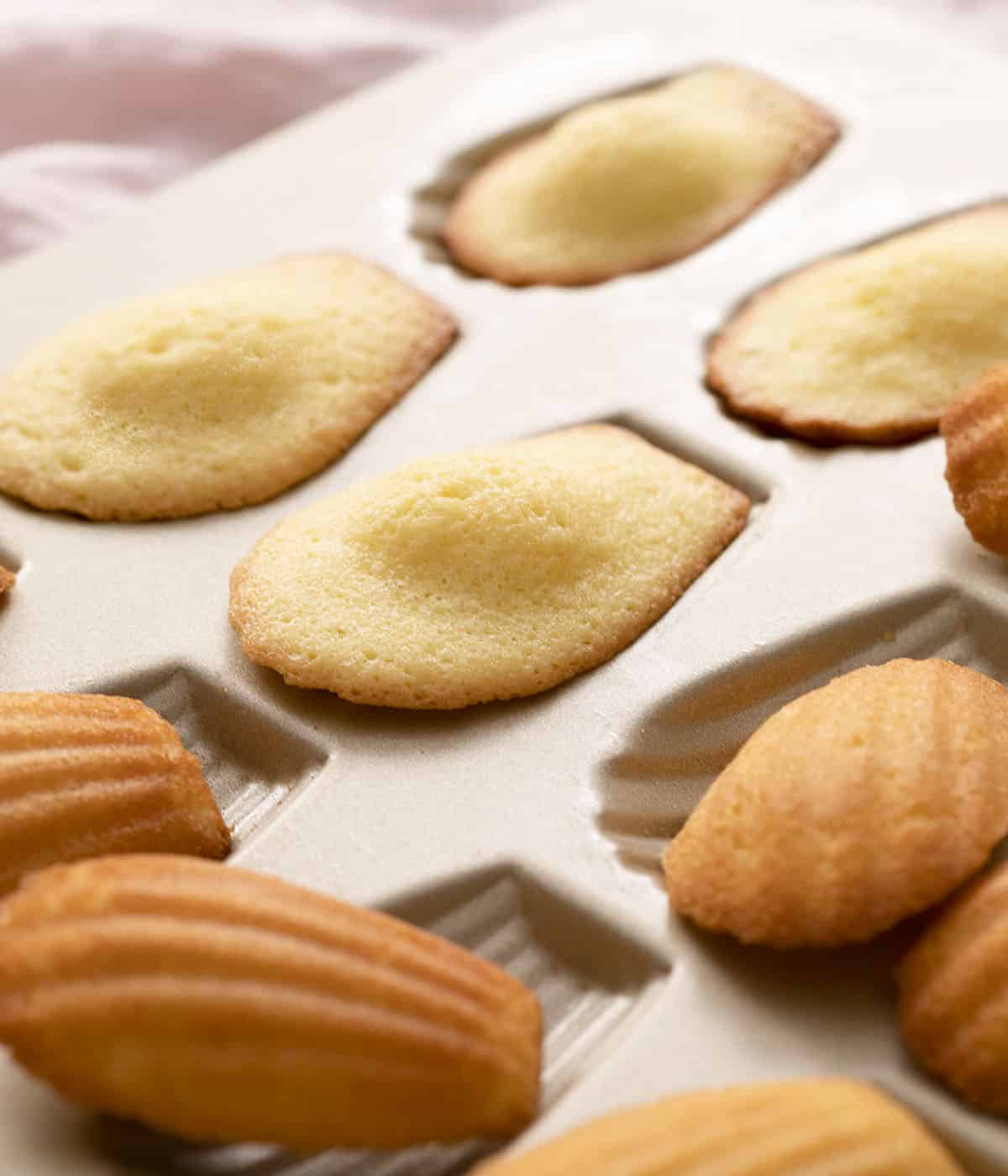
Variations
- Switch up the flavorings: Get creative with the flavor of your madeleines by adding orange zest or almond extract. You can also replace up to ¼ cup of flour with an equal amount of cocoa powder.
- Dip them in chocolate: For extra sweetness, dip the cooled madeleines in the melted chocolate of your choice. You can dip the entire scalloped side or dip just a portion of the cake. Feel free to add sprinkles or chopped nuts to the chocolate (before it sets) for decoration.
- Dip them in a glaze: Another way to add sweetness to madeleines is to dip them in a powdered sugar glaze. To complement the lemon zest in the madeleines, you can make a lemon glaze with fresh lemon juice and powdered sugar. Try the glaze from my lemon cookies! Dip the cooled madeleines into the glaze and let the glaze set before enjoying.
How to Store
Madeleines are best enjoyed the day you bake them, but leftovers will keep in an airtight container at room temperature for up to 3 days. Be aware that they will start to harden slightly as time passes.
Pro Tips For Making This Recipe
- Brown the butter for a lovely depth of flavor. See my tutorial for how to brown butter if you are unfamiliar with the process. If you decide to use browned butter, I recommend browning a full stick (8 tablespoons) and then measuring out 7 tablespoons for the recipe. This is because some moisture will evaporate from the butter during browning, and the volume will be reduced when it is finished.
- Measure your flour correctly! Adding too much flour to the recipe is a common mistake, which will yield dry madeleines. The best and easiest way to measure flour is by using a scale. If you don’t have one, fluff your flour with a spoon, sprinkle it into your measuring cup, and use a knife to level it off.
- Use room-temperature eggs. Set the eggs out in advance so they are not very cold when you start preparing the batter. Room-temperature eggs are easier to whip up and aerate.
- The batter is delicate. The madeleine batter is a genoise batter, which means it gets most of its lift from tiny air bubbles beaten into the eggs. So be gentle with your delicate batter to avoid it deflating. In step 4, when you add the flour mixture to the wet ingredients, you can sift the flour mixture into the eggs while you gently fold to avoid over-mixing the batter.
- Chill the batter before baking. This shock in temperature (cold batter in a hot oven) helps the little sponge cakes puff up and create their signature hump.
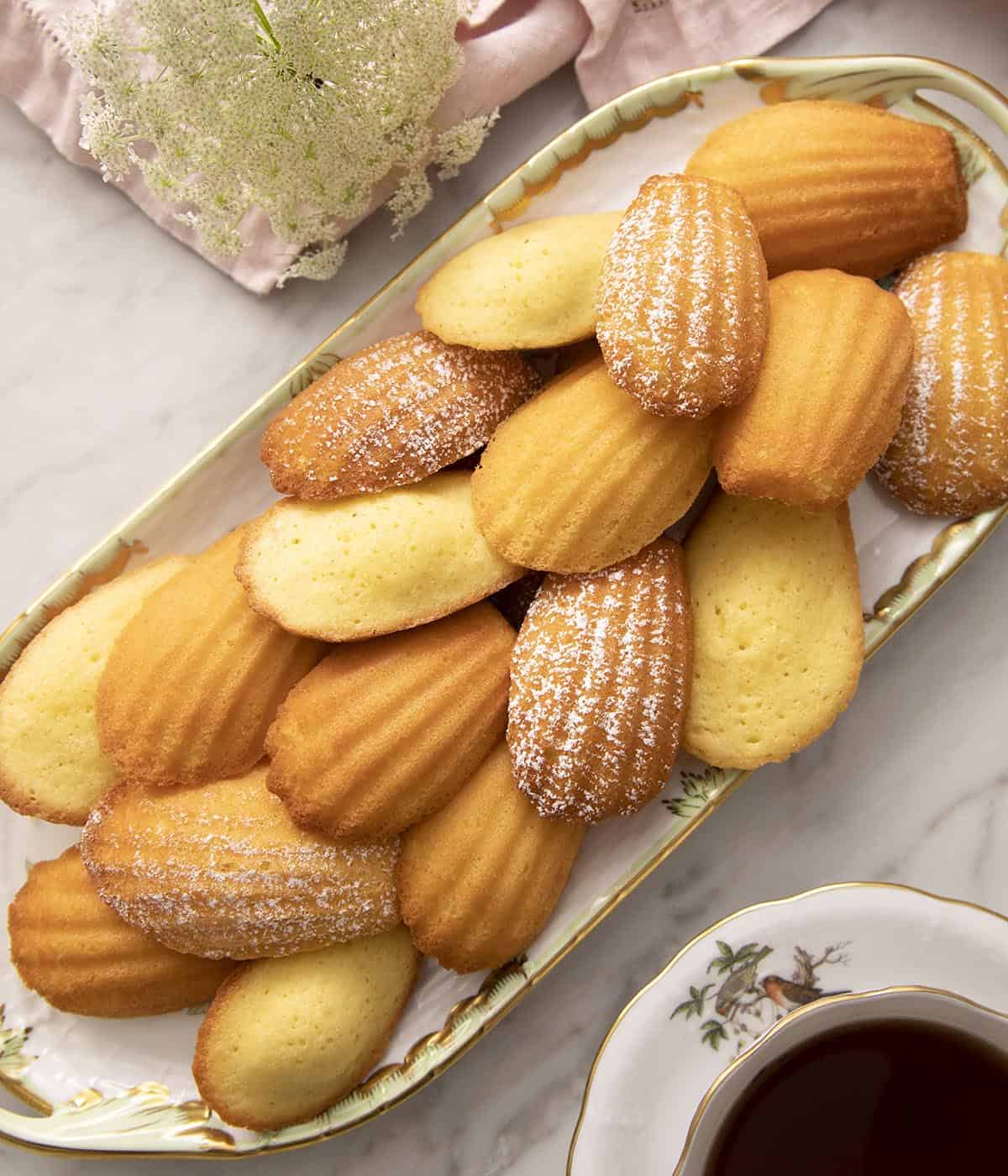
Frequently Asked Questions
Yes, you can. Be sure to use the batter within 12 hours, though, or else their ability to rise properly may be affected. The longer the batter sits, the less active the baking powder will be, and the more the egg whites will deflate.
Yes! Use a mini muffin pan instead. The bake time may vary by a couple of minutes, since the cavity shape is very different, so keep an eye on them. Grease the muffin tin well with baking spray and fill each cavity about three-fourths full with batter.
For the madeleines to develop their signature bump, the batter and the baking pan need to be cold. Both need to be chilled for an hour before baking. The heat from the oven will then cause the cold batter to puff up and create a hump. However, with or without a hump, your madeleines will be delicious! So don’t worry too much if they don’t have it.
If your cakes are sticking to the pan after baking, run a knife around the edge and gently press at the base to nudge the madeleine forward. It should release without losing any crumbs.
If you’ve tried this madeleines recipe, then don’t forget to rate it and let me know how you got on in the comments below. I love hearing from you!

Madeleines Recipe
Video
Equipment
- Madeleine pan
- Stand mixer or handheld electric mixer
- Bowls
- Fine Mesh Strainer (for sifting)
- Nonstick baking spray (with flour)
Ingredients
- 7 tablespoons unsalted butter (100g)
- ¾ cup all-purpose flour plus 1 tablespoon (100g)
- ¼ teaspoon baking powder
- pinch salt
- 2 large eggs room temperature
- ½ cup granulated sugar (100g)
- 1 teaspoon vanilla extract
- 1 teaspoon lemon zest
- Powdered sugar for dusting
Instructions
- Melt the butter in either in your microwave or in a small pot over medium heat. Once melted, pour the butter into a bowl and allow it to cool to room temperature.
- In a medium bowl, sift together the flour, baking powder and salt. Whisk it together and set aside.
- In the bowl of a stand mixer fitted with a whisk attachment (or in a large bowl using a handheld mixer), combine the eggs and sugar. Beat on high speed for 4 to 5 minutes until the mixture is a very pale yellow color with a thick silky texture. (This may take closer to 5 to 7 minutes with a handheld mixer.) When you lift the beaters, the mixture will leave thick ribbons on the surface when it’s ready. Mix in the vanilla and lemon zest on low speed just until combined.
- Fold the dry ingredients into the egg mixture and mix until just combined. (You can sift the flour mixture into the eggs while you fold to avoid getting lumps or over-mixing the delicate batter.)
- Drizzle the butter into the batter and gently mix until just combined.
- Cover and refrigerate the batter for 1 hour.
- Spray inside the cavities of the Madeleine pans with nonstick baking spray. (Alternatively, you can brush them 1 tablespoon of melted butter). Refrigerate the pans for about 1 hour while the batter is chilling.
- After the batter has chilled for 40 minutes, preheat the oven to 350°F.
- Scoop a generous tablespoon of batter into each of the scallop-shaped wells. Bake for 8 to 10 minutes until golden brown on top and the cakes spring back slightly when pressed with your finger.
- Let the madeleines cool in the pan for about 3 minutes, then turn out of the pan to cool completely (not on the scalloped side.)
- Serve with a light dusting of powdered sugar.
Notes
- Brown the butter for a lovely depth of flavor. See my tutorial for how to brown butter if you are unfamiliar with the process. If you decide to use browned butter, I recommend browning a full stick (8 tablespoons) and then measuring out 7 tablespoons for the recipe. This is because some moisture will evaporate from the butter during browning, and the volume will be reduced when it is finished.
- Measure your flour correctly! Adding too much flour to the recipe is a common mistake, which will yield dry madeleines. The best and easiest way to measure flour is by using a scale. If you don’t have one, fluff your flour with a spoon, sprinkle it into your measuring cup, and use a knife to level it off.
- Use room-temperature eggs. Set the eggs out in advance so they are not very cold when you start preparing the batter. Room-temperature eggs are easier to whip up and aerate.
- The batter is delicate. The madeleine batter is a genoise batter, which means it gets most of its lift from tiny air bubbles beaten into the eggs. So be gentle with your delicate batter to avoid it deflating. In step 4, when you add the flour mixture to the wet ingredients, you can sift the flour mixture into the eggs while you gently fold to avoid over-mixing the batter.
- Chill the batter before baking. This shock in temperature (cold batter in a hot oven) helps the little sponge cakes puff up and create their signature hump.



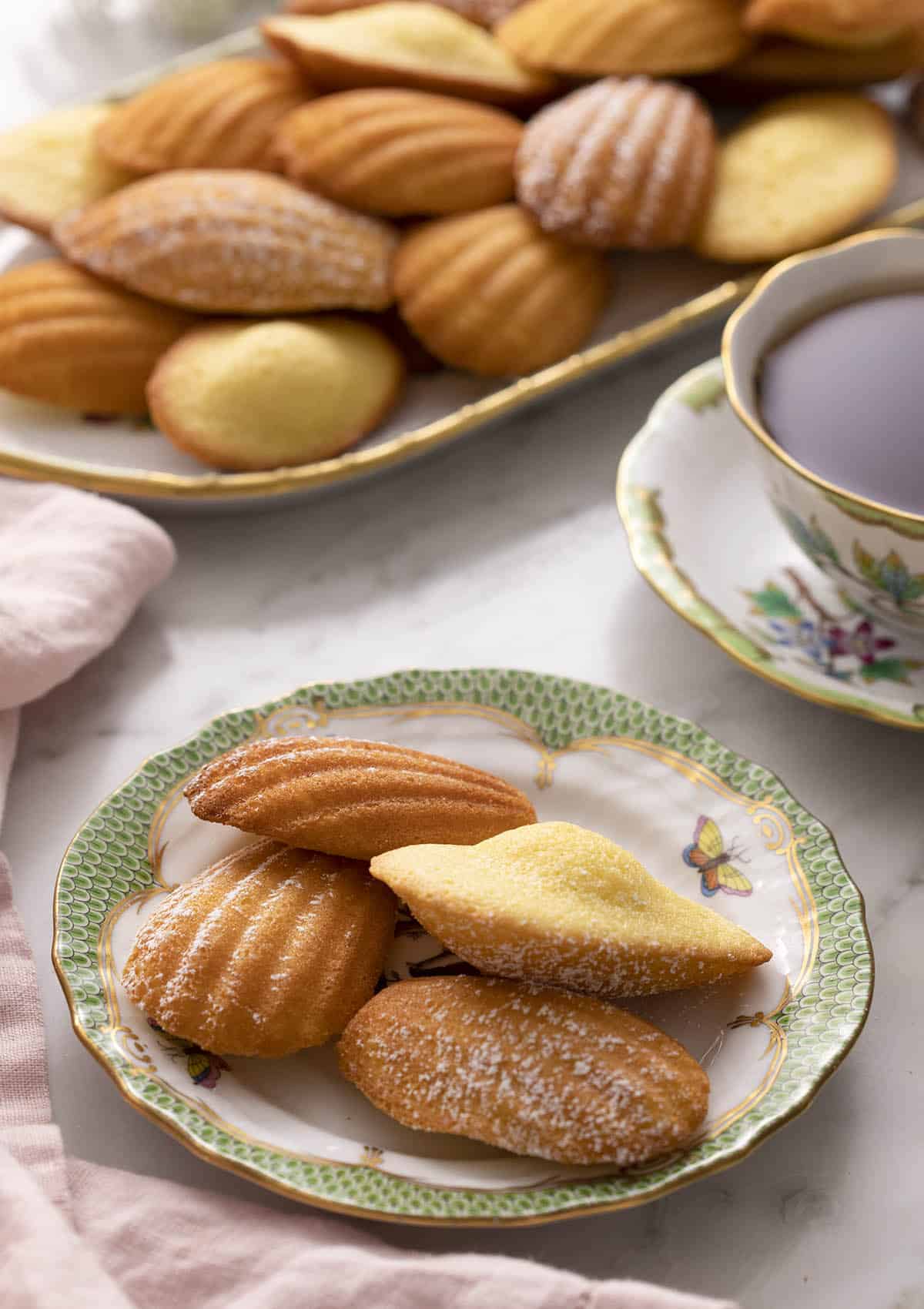
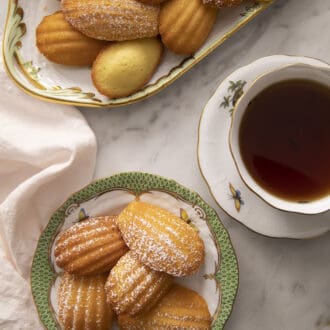
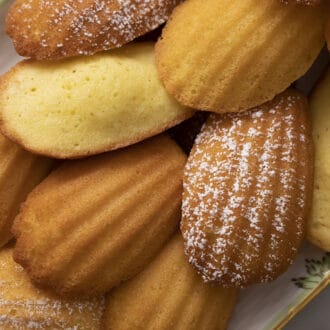


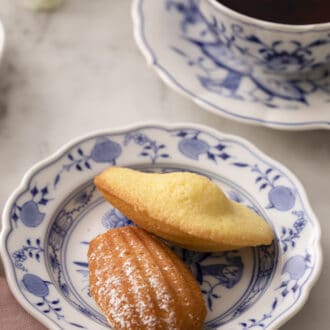
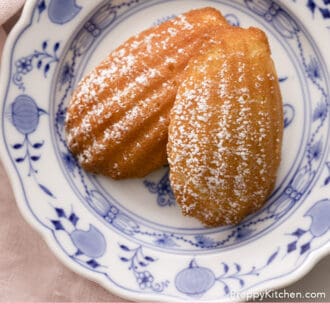
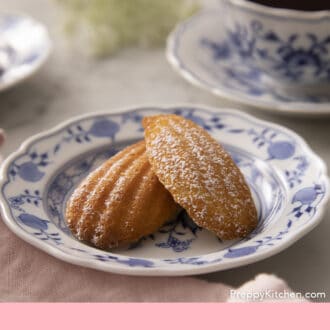
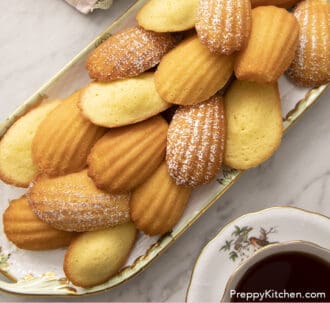
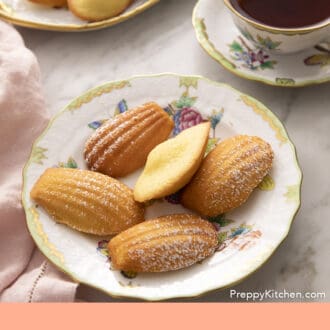

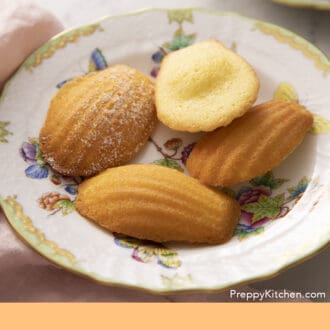
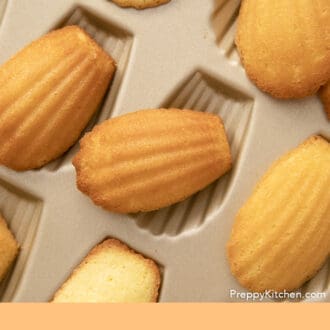
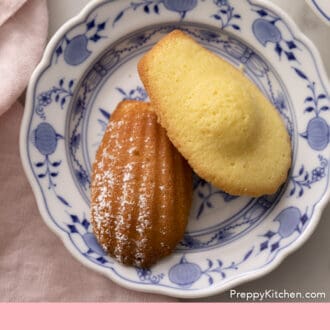
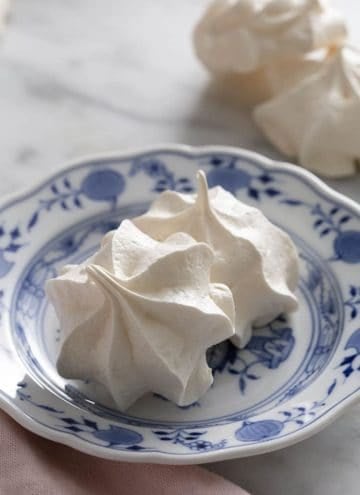

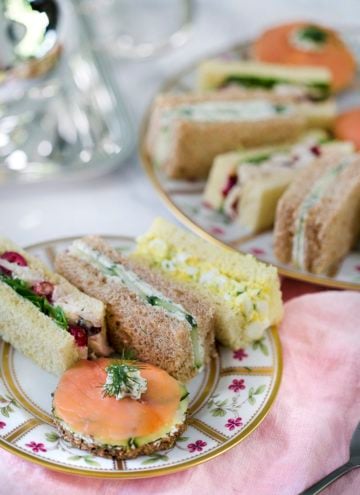
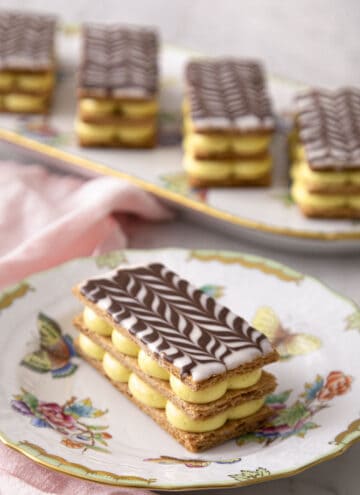


Tahiyah says
I didn’t add lemon zest but these came out wonderful regardless! They are light, airy, and wonderfully delicious! Great and easy to follow recipe, thank you!
Anna M. says
OMG I made these beautiful Madeleine’s yesterday and I have to make another batch today because they are all gone!! Thanks for this wonderful recipe.
Mike Goldberg says
Dear John, you are my “go to” baker for recipes — always clear and precise, and I love teh outtakes when the powdered sugar goes everywhere (same here). The madeleine recipe is a favorite of the neighbors and work colleagues… I pretend it is difficult but you make it easy (our little secret please). Very best, keep those recipes coming! I am also enjoying your book, sir.
Bukky Adeiya says
Love love love this recipe John!! You always outdo yourself. Thank you soo much for sharing this. It was perfect. Airy and delicious.
Your recipes are my go-to. Thanks for paving the way for the newbies
Arshia says
Love this recipe! It was so good
Roxanne Campos says
Hello i absolutely love you…i love watching ur videos & trying them i was having a hard time with macaroons saw your recipe tried it & loved it. I cannot wait to try this Madeline recipe. Im glad i found your site.
John Kanell says
Thank you Roxanne!
Aeryl Parcon says
It was honestly wonderful. It was light and airy, had a very nice texture. Browning the butter really elevates the dish even more. It was delicious. Thanks for the recipe.
Beth says
I can’t wait to make these. Just ordered my pan!